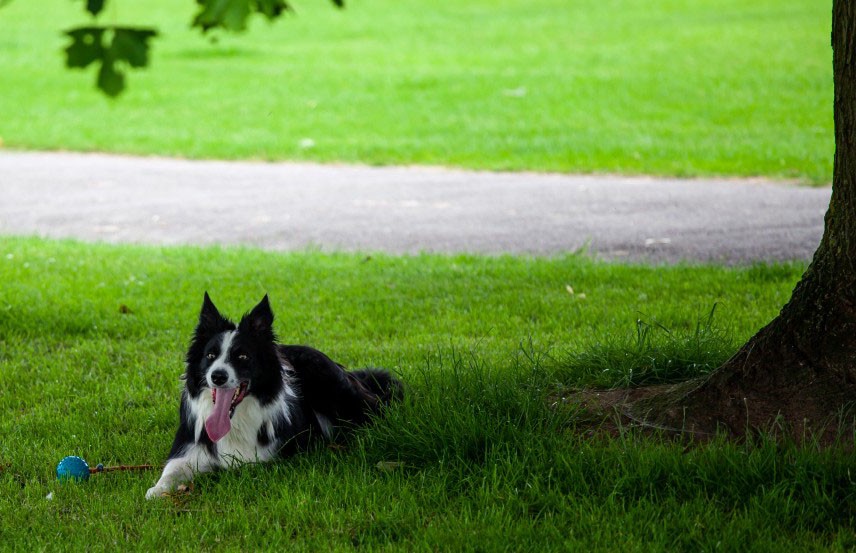
What could be more irritating than a flea infestation? It?s no coincidence that the scientific name for one notorious flea species is Pulex irritans. These insects are annoying!
Generally, fleas become an issue in the homes of people who have pets such as cats and dogs. However, that?s not always the case. It is possible to get fleas inside your home even if you don?t have a pet. And whether you have a pet or not, if you?ve been the victim of a flea infestation, you may want to know how it happened. Where do these monsters come from?
Well, fleas have a somewhat unusual life cycle, and it helps to understand this cycle to understand where fleas come from.
Ultimately, and in most cases, fleas come from outside. These tiny insects live outdoors, especially in warmer climates. For this reason, flea infestations are far more common in the summer than they are in the winter, when large numbers of the fleas go dormant or die off.
Let?s take a closer look at how fleas become an issue in modern homes.
Outside

Fleas are supposed to live outside. One hundred million years ago, when fleas first evolved into something like their present form, there were no houses for them to hide in. For that matter, there were no dogs or cats for them to feed on, either. These early fleas sucked the blood of dinosaurs and learned to survive outdoors.
To this day, fleas live outdoors. In warmer climates, they can survive year-round, but in cooler areas, they tend to die off in the winter. But in the summer, their population explodes.
Fleas require high humidity to stay alive, and so they prefer to hide in shaded areas. Under bushes, in garden sheds, under porches, and in the shade of trees are all perfect areas for the fleas to live. Flea larvae can feed on a variety of organic matter, including dead insects, plants, the undeveloped eggs of their parents, and flea dirt. Flea dirt is the faeces of the adults, the partly digested blood that has passed through their bodies and been excreted as waste. Yes, it?s disgusting. But fleas don?t share our delicate sensibilities.
The larvae avoid sunlight and try to stay hidden in dark areas. The adults, too, hide while they wait for a host to pass by. Fleas are sensitive to vibration and will feel the presence of a warm-blooded animal coming close. Once it?s within range, the fleas use their incredible jumping ability to launch themselves onto the host.
Once a flea has found a host, it will start biting. Adult fleas feed solely on blood, and if they can avoid it, they will never leave the host again. They will lay eggs on the poor animal and live out their whole life hidden in its fur is they can avoid getting knocked off.
Fleas In The House

It?s partly our own fault. If we didn?t live with other animals, we wouldn?t encounter flea problems very often. While there is a species known as the human flea, alongside the more common cat flea and dog flea, we Homo sapiens don?t make great hosts for these insects. We?re just not hairy enough. Fleas will most definitely bite us for a quick and easy blood meal, but they have a hard time staying attached to our bodies. After all, not only do we have less hair than most other mammals, but we also have a habit of bathing regularly.
So the main reason people get fleas in the house is because of their pets. Dogs or cats that spend time outside can easily bring a flea into the house when they come in. The same shady area of the garden that your dog likes to lie in makes a great place for fleas to hide and ambush your pet.
Once your pet has brought some fleas inside, it?s only a matter of time before the fleas lay eggs. Female fleas are baby making machines, capable of laying thousands of eggs in their lifetime. They can easily lay 30 eggs per day, so a single flea can quickly become a relatively large population in a short amount of time. A healthy flea population can be up to 90% eggs.
Fleas lay their eggs on their host, but the eggs fall off easily. And as your pet scratches its itchy bites, eggs will become dislodged and fall to the floor. If you have carpets, you have the perfect flea nursery installed throughout your home. Even if you don?t, fleas will find places where they can develop. Upholstered furniture and cat and dog beds are also great places for fleas to develop.
Apartments
If you live in an apartment, there?s another way you can get fleas. If your neighbors have them, it?s not difficult for these tiny insects to find their way from one unit to the next. And as the population grows, it becomes more likely that they will do so. Because of their small size, fleas can easily enter apartments through holes in the walls where heat and water pipes enter and exit. For that matter, they could crawl right under the door. And while fleas don?t travel well on people, it?s not impossible. You could have brought them in yourself without ever knowing it.
For this reason, it?s possible to get fleas even if you don?t have a yard. For that matter, it?s possible to get fleas even if you don?t have pets.
Previous Residents
Sometimes, flea infestation seemed to come in waves. When treating for fleas, a drop in activity can make it seem as though you?ve won the war. But experienced pest control professionals know not to declare victory too soon. Since a flea population is overwhelmingly composed of eggs and juveniles, it?s possible to kill all the adults and stop getting bites. But before long, the eggs will hatch out, and new fleas will emerge to pick up the work of their parents.
So imagine you?ve moved into a new home. At first, everything seems fine. But soon, you start to notice those telltale bites on your skin. And before long, you start finding the insects themselves. If the previous residents of your home had fleas, these bugs may be waiting for you when you move in.
Got a problem with wasps? Read my article on 4 ways to avoid them this summer: https://medium.com/@crosfieldd/4-ways-to-keep-wasps-out-of-your-yard-b2e03a5f74b5


